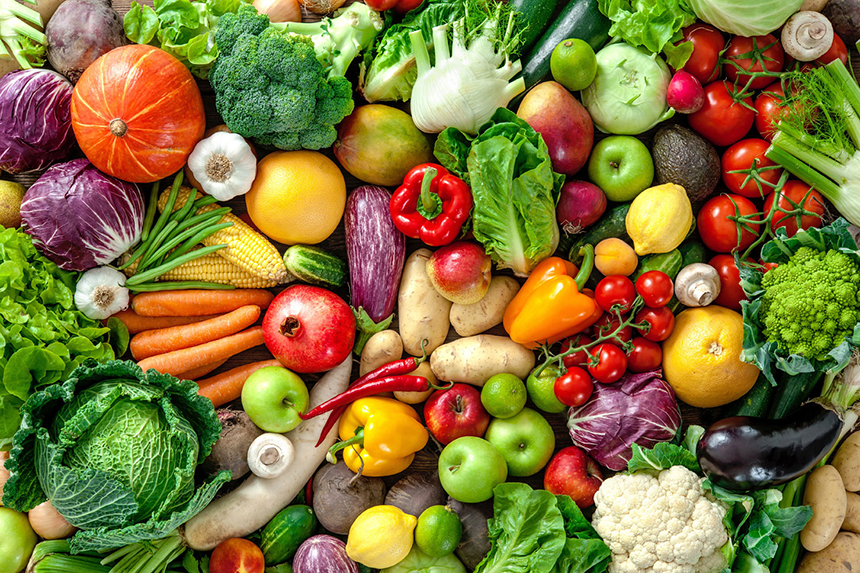Introduction
India, with its rich agricultural heritage and diverse climatic zones, stands as a major player in the global fruits and vegetables export market. Known for its extensive range of produce, India plays a crucial role in meeting the global demand for fresh and nutritious fruits and vegetables. This blog explores the dynamics of India’s fruits and vegetables export sector, highlighting key exports, driving factors, challenges, and future opportunities.
Key Fruits and Vegetables Exported by India
1. Fruits:
- Mangoes: India’s mangoes, particularly the Alphonso and Kesar varieties, are highly sought after for their sweetness and aroma. Major export destinations include the Middle East, Europe, and North America.
- Bananas: India is one of the world’s leading exporters of bananas, with significant volumes shipped to the Middle East, Southeast Asia, and parts of Africa.
- Grapes: Indian grapes, known for their quality and taste, are exported to markets in Europe, the Middle East, and Asia. Both table grapes and those used for wine production are in demand.
- Pomegranates: Valued for their juiciness and nutritional benefits, Indian pomegranates are exported mainly to the Middle East, Europe, and Southeast Asia.
2. Vegetables:
- Potatoes: India is a leading exporter of potatoes, particularly to the Middle East, Southeast Asia, and Africa. Indian potatoes are known for their quality and versatility.
- Onions: Indian onions are renowned for their flavor and are exported primarily to the Middle East, Asia, and Africa. The country’s onions are a staple in many international cuisines.
- Tomatoes: Fresh and processed tomatoes from India are exported to various international markets, including the Middle East and Southeast Asia.
- Green Chilies: Indian green chilies are in demand for their pungency and flavor, with significant exports to the Middle East and Asia.
Factors Driving India’s Success in Fruits and Vegetables Exports
1. Diverse Agro-Climatic Conditions:
India’s varied climate and soil conditions support the cultivation of a wide range of fruits and vegetables throughout the year. This diversity ensures a continuous supply of high-quality produce.
2. Government Support:
The Indian government has introduced various initiatives to boost the export of fruits and vegetables. Policies such as the Agri Export Policy and subsidies for farmers help in improving production, quality, and market access.
3. Technological Advancements:
Innovation in agricultural practices, including improved irrigation systems, pest management, and post-harvest technologies, enhances the quality and shelf life of produce. Advances in cold storage and logistics also ensure that fruits and vegetables reach international markets in optimal condition.
4. Quality Standards and Certifications:
To meet global standards, Indian exporters adhere to rigorous quality control measures and obtain necessary certifications like GlobalGAP and Organic Certification. These certifications help in building trust and credibility in international markets.
5. Strategic Trade Relationships:
India’s strong trade relationships with various countries facilitate smoother access to global markets. Bilateral agreements and trade partnerships help in expanding market reach and enhancing export opportunities.
Challenges in the Fruits and Vegetables Export Sector
1. Climate Variability:
Climate change and extreme weather conditions can impact crop yields and quality. Adapting to these changes through resilient farming practices and improved water management is crucial.
2. Infrastructure Constraints:
Challenges with storage, transportation, and processing infrastructure can lead to post-harvest losses and affect the quality of exported produce. Investing in modern infrastructure is essential for maintaining export standards.
3. Pest and Disease Management:
Pests and diseases pose risks to crop health and yield. Implementing effective pest management strategies and investing in research for disease-resistant varieties are necessary to mitigate these risks.
4. Market Volatility:
Fluctuations in global market prices and changing trade policies can impact export volumes and profitability. Developing strategies to manage price volatility and navigating trade policies are important for stability.
Opportunities for Growth in Fruits and Vegetables Exports
1. Exploring New Markets:
Emerging markets, particularly in regions with increasing demand for fresh produce, offer new opportunities for growth. Expanding into markets in Africa, Latin America, and Southeast Asia can diversify export channels.
2. Value Addition:
Investing in value-added products, such as processed fruits and vegetables, can enhance export revenue. Developing products like frozen fruits, dried vegetables, and ready-to-eat meals can cater to evolving consumer preferences.
3. Sustainability Initiatives:
Adopting sustainable farming practices and obtaining eco-friendly certifications can attract environmentally conscious consumers and markets. Promoting sustainability can also enhance India’s reputation as a responsible exporter.
4. Technological Innovation:
Continued investment in agricultural research and technology, including precision farming and advanced processing techniques, can drive growth and improve competitiveness in the global market.
Conclusion
India’s fruits and vegetables export sector is a vital component of the global food supply chain, offering a diverse range of high-quality produce to international markets. With its rich agricultural resources, supportive government policies, and growing global demand, India is well-positioned for continued success in this sector. Addressing challenges and leveraging opportunities will ensure that India remains a leading exporter of fruits and vegetables, contributing to global nutrition and economic development.


